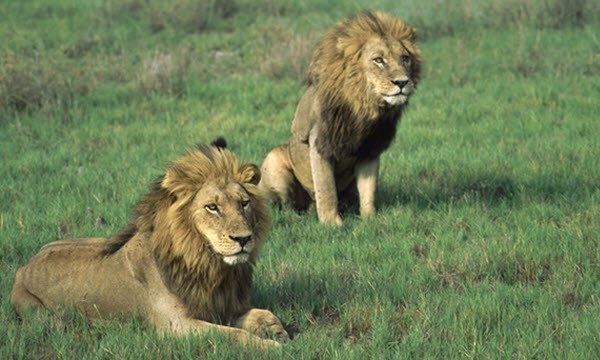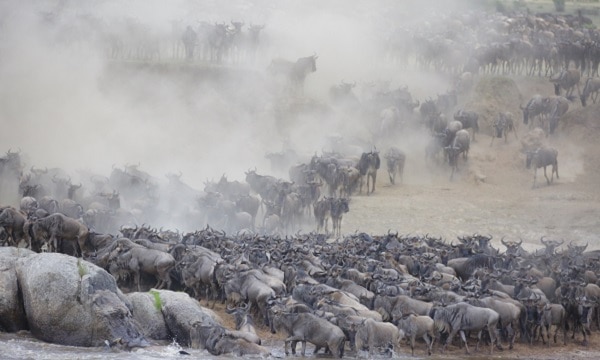What is the Best Time to Go on Safari?
Seasons, Country and Your Preferences Determine Your Best Time to Go On Safari
Are you flexible to go on your safari trip whenever you want?
Are you tied to a particular vacation time?
Safari Through The Seasons
Green Season

Grean Season Pros:
- Heavily discounted rates and excellent value – stretch your budget for a longer safari!
- Less crowds
- Abundant food results in more births
- Animals are well fed and watered, healthy and active
- Beautiful green scenery and dramatic clouds make for stunning photography
Green Season Cons:
- Better Chance of Rain
- May be more difficult to find wildlife as they may be less concentrated, and the foliage may serve to hide their location
- Some camps close during certain green season months in areas that experience a great deal of rain
- Possibly adventurous driving conditions if mud is present, safari vehicles are modified to handle these conditions and guides are generally skilled off road drivers
Southern Africa (Botswana, Namibia, Zambia, Zimbabwe & South Africa)
Botswana
South Africa
This dichotomy of weather is actually a boon if you’re looking to skip Cape Town and are focused on a South Africa Safari. You might be able to get a great rate on a safari lodge at Kruger National Park. You’re really in luck if you’re looking for one of the most elusive members of the big five: leopards. Sabi Sands private game reserve is well known as being arguably the best place to spot leopards in South Africa.
The Okavango Delta is truly a year round safari destination in Southern Africa. The Delta is located in the northern part of Botswana. Rains from Angola to the northwest of Botswana make their way down to the Delta. Here, tourists are few and far between and lion, buffalo, leopard and elephant are commonly spotted here.
Namibia’s Etosha National Park is located in the northern part of the country. Namibia is known for its exceedingly arid climate which can lead to extremely hot days and cold. August and September are the ideal safari season for Etosha. While on safari in Etosha you can expect to see a variety of fauna – including elephants, lions and the occasional leopard. Etosha also boasts a healthy population of black rhino!
East Africa (Kenya, Tanzania, Rwanda, Uganda)
Kenya and Tanzania
The greater availability of water allows wildlife to disperse. It also triggers many herbivores like wildebeest to give birth. The Great Migration – a wildebeest migration – occurs in East Africa in and around Serengeti National Park in Tanzania and the Masai Mara National Reserve in Kenya.
One of the most amazing facets of the Great Migration is the zebra and wildebeest crossing the Mara River while doing their best to elude hungry crocodiles. Witnessing the crossing of the Mara is the highlight of a Kenya safari or a trip to the Serengeti.
Rwanda and Uganda
Rwanda and Uganda are both known for gorilla trekking and have two distinct wet seasons. While mountain gorillas are located in the rainforest, and it can rain any time, it can be an arduous hike to see them during the wet season due to muddy conditions and long downpours. April and May are generally the wettest time, followed by November and December.
Green Season and Birding
Green Season Discounts
Peak Season

Wildlife Behavior During Peak Season
Peak Season Crowds
Shoulder Season
Finding Your Best Time to Go on Safari
- Unsurprisingly, many safari goers want to see the big five
- Some travelers want to combine gorilla trekking or chimpanzee trekking with a trip to the Serengeti
- Occasionally safari travelers want to go on safari then go on a beach vacation in Mombasa or even scuba diving in Mozambique
- Night drives are a popular request when predators and prey are at their most active
Others are seeking a once in a lifetime multi-generational family safari - The desire to assist wildlife biologists with research on Cheetah in the Masai Mara
- More adventurous travelers are interested in walking safaris – where much of your safari is done on foot with an experienced guide
- Some of our clients are more interested in cultural activities – like visiting a Bushman tribe in Botswana
- Mokoro (canoe) and riverboat safaris are popular among many of our clients
About The Wild Source
We also are pioneers in disruptive empowerment which provides a path to camp ownership for local partners to be more than just employees. As a result, many of our safari guides are part owners as well and earn significantly more than guides in traditional safari camps.
Next Steps
Learn more about planning your safari by checking out the links below. Or sign up for our newsletter.